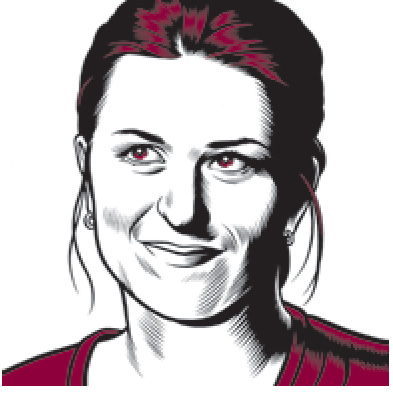Kateřina Šedá is a thirty-four-year-old Czech artist, living in her birth village and collaborating with nonartists living in smaller villages in her country, intervening in their social circumstances to generate actions that yield atypical social configurations. For There Is Nothing There (2003), she studied the daily activities of the citizens of Ponětovice, a small Czech village, and then rearranged their schedules, synchronizing the entire village so their quotidian and usually isolated activities happened together. The town council participated, and turned off the lights at 10 p.m. Many of her projects involve large groups of people and complicated logistics: From Morning Till Night (2011) featured eighty people from Bedřichovice, Czech Republic, who traveled to London, where they occupied an area identical in scale to their village. They went about their ordinary activities while eighty British painters surrounded the performance, painting a representation of the village from photographs. The boundary between Šedá’s life and her work is permeable to the point of disappearing entirely. With It Doesn’t Matter (2005–07), she goaded her depressed, bedridden grandmother into creating six hundred drawings based on the inventory of a home-supply store her grandmother had worked at her entire life.
Šedá laughs a lot at herself, and easily acknowledges that even she has a hard time explaining her projects. She speaks quickly and forcefully, sounding like a Hollywood depiction of an Eastern European revolutionary, and expresses bemused and resigned impatience with people who do not understand her idiosyncratic epiphanies. For the first part of this interview, she spoke through an interpreter, who eventually left her on her own.
—Darren O’Donnell
I. THE PROBLEM WITH ART
THE BELIEVER: How did you arrive at this kind of work? When you were eight years old, were you thinking, I want to fuck with people’s heads?
KATERINA ŠEDÁ: This came from childhood; when I was a little girl I always tried to control other children. When they asked me what I would like to do for a living, I always told them I would like to be a director. They asked me, “Director of what?” and I told them, “Well, director of everything.” I understood my classmates’ actual roles in society: who would calm the group, who should not be present at certain points. I always had the feeling that this was my future profession. This is how I perceive my current occupation; it’s almost a calling. In Czech the words for occupation and calling are very similar. So for me it was very easy; I never made any decisions, it was a straightforward route. I’ve been doing the same thing I’ve been doing since I was a child.
BLVR:...
You have reached your article limit
Sign up for a digital subscription and continue reading all new issues, plus our entire archives, for just $1.50/month.
Already a subscriber? Sign in





